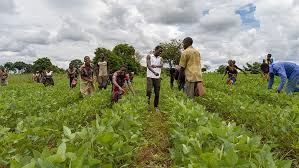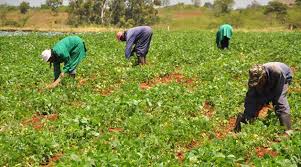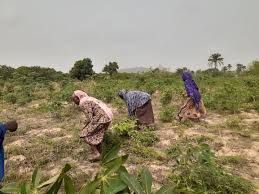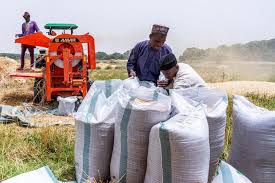In previous articles, it was highlighted that financial institutions face numerous challenges in offering credit to farmers. When farmers take loans in Nigeria, many of them struggle with repayment.
Some of the reasons have been addressed earlier, but two key issues require further attention: loan delinquency and loan diversion. This article focuses on these issues.
Loan Delinquency
Agricultural loan delinquency refers to the inability of the borrower to repay borrowed funds under agreed repayment conditions. Loan delinquency severely affects the sustainability of financial institutions.
As a result, these credit institutions often rely on government allocations to survive or remain operational. Loan delinquency deprives credit-worthy farmers of the opportunity to access agricultural credit facilities.
Some scholars have described agricultural loan delinquency as socially and economically undesirable, contributing to resource mismanagement. It is therefore important to understand why agricultural loan delinquency is common among farmers in developing nations, as this understanding may help in suggesting ways to eliminate or reduce the problem.
Read Also: 16 Medicinal Health Benefits Of Scleromitrion diffusum (Spreading Diamond Flower)
Causes of Loan Delinquency in Nigeria

1. Borrowers’ Attitude: Some borrowers deliberately refuse to repay loans. These borrowers view credit from formal lenders as government funds and, therefore, consider it their share of national resources. Many borrowers also have a poor credit repayment history and may have used the loan for consumption purposes instead of production.
2. Natural Disasters and Calamities: Due to the biological nature of agriculture, farmers are exposed to high risks and uncertainties. For example, in rainfed agriculture, crop yields depend on the amount of rainfall during a specific period, and rainfall may not occur at the proper time. Furthermore, pest and disease outbreaks can also affect crop yields, and in extreme cases, diseases can wipe out entire livestock populations.
In addition, both the inputs used by farmers and the outputs produced are subject to price fluctuations. A good harvest, accompanied by favorable produce prices, would lead to higher income and, consequently, a higher ability to repay loans.
Conversely, poor yields combined with low produce prices increase the likelihood of loan delinquency. Furthermore, illness affecting farmers or their animals may cause the diversion of production loans for medical expenses, contributing to delinquency.
3. Poor Assessment of Assets Value by Lending Institutions: The value of assets is sometimes poorly assessed by bank officials due to reliance on the borrower’s past credentials or available collateral, which may be misleading. Assets can include liquid cash, promissory notes, farm produce, livestock, and equipment.
All assets should be properly assessed before funds are released to the farmer to create a clear picture of the farmer’s repayment ability. Poor assessment of assets can lead to either excess or insufficient loan disbursement. Excess funds may result in loan diversion, while insufficient funds could lead to the non-completion of farm projects, both of which can contribute to loan delinquency.
4. Poor Project Monitoring and Supervision: Inadequate supervision increases the risk of loan delinquency. Proper utilization of credit for its intended purpose is essential to achieve the goals of increasing production and the borrower’s income.
For example, in Vandeikya Local Government Area of Benue State, delinquent borrowers received an average of one visit from extension agents, while non-delinquent borrowers received an average of four visits. The latter group had higher yields per hectare and, therefore, higher income, which improved their ability to repay loans.
5. Untimely Release of Funds: Delays in processing and releasing loans to farmers, often due to over-centralized operations and inefficient loan application processes by lending institutions, contribute to loan delinquency. It has been found that timely coordination and interaction between lenders and borrowers are essential for the prompt release of credit. Ineffective coordination results in delayed release of funds, which affects crop yields and leads to loan default.
Some studies have identified critical periods for credit needs, coinciding with labor bottlenecks, such as the weeding period for established crops. Delayed funds release, especially after these critical periods, has been found to account for around 60% of loan diversion to non-farm activities such as school fees, hospital bills, ceremonies, and litigations, ultimately resulting in loan delinquency.
6. Poor Producer Price: Unsatisfactory producer prices contribute to loan delinquency. Farmers who sell their produce immediately after harvest, often due to cash flow pressures, receive lower prices, reducing their income and increasing the likelihood of loan delinquency.
Farmers who are able to store their produce for four to six months after harvest, with minimal storage costs at home, are more likely to receive better prices for their produce, thereby increasing their ability to repay loans.
7. Low Literacy Level of Borrowers: Educated borrowers tend to have a better understanding of the need to repay borrowed funds to ensure the continuity of credit programs. As a result, delinquency rates are lower among educated farmers.
In contrast, uneducated farmers often misunderstand the purpose of credit and are more likely to use it for non-productive purposes, such as marrying additional wives or increasing household expenses, which leads to higher delinquency rates among this group.
8. High Cost of Borrowing: The high cost of borrowing is widely recognized as a factor that encourages delinquency. When agricultural loans come with high interest rates and significant transaction costs, farmers face increased financial pressure. Consequently, farmers who borrow at these high rates may struggle to repay the loans, leading to delinquency.
Total Value of Production

The income of a farmer is directly tied to the total value of production. To generate enough income to cover loan repayments, a farmer’s production must be high and exceed subsistence levels. Studies in south-west Nigeria reveal that small-scale farmers spend most of their income on consumption and even borrow to support consumption during the pre-harvest season.
For these farmers to avoid loan default, their income must be significantly higher than their consumption requirements. However, the income of most small-scale farmers in Nigeria remains low, causing many to default on borrowed loans.
Granting Credit on Social/Political Grounds
Loans are sometimes granted to farmers based on personal or political connections. For example, a bank manager may approve a loan for a friend or someone of the same tribe. Similarly, loans may be given to farmers for political reasons without considering the viability of their projects. In such cases, farmers who are not credit-worthy may misuse the loan and fail to repay when it is due.
Loan Diversion
Loan diversion occurs when a borrower uses credit for purposes other than those agreed upon with the lender. For instance, if a farmer takes a loan to cultivate crops but uses the funds to pay school fees or engage in petty trading, this constitutes loan diversion. Loans are provided to farmers with the expectation that these funds will enhance farm productivity. When the money is used for other purposes, the loan is considered diverted.
Causes of Loan Diversion
1. Late Disbursement of Loan: Funds intended for agricultural production should be made available to farmers during critical periods such as land clearing, land preparation, sowing, weeding, or harvesting. Farmers prefer to receive credit at the start of the rainy season rather than during peak farming activities.
Timely disbursement is essential for productive use of loans. If loans are not disbursed at the right time, farmers are likely to divert funds to unproductive ventures, such as family consumption. Since farming operations are time and weather-sensitive, releasing agricultural loans after planting periods have passed is unrealistic and often leads to diversion.
2. Inappropriate Loan Supervision: Proper supervision is necessary to ensure that loans are used for their intended purposes. Adequate and qualified staff are needed for effective credit supervision and administration. Inappropriate credit supervision and follow-up have been major causes of the failure of credit programs in Nigeria and other developing countries. Without proper supervision, loans are more likely to be diverted to non-agricultural uses.
3. Double-Digit Interest Rates: The Central Bank of Nigeria sets the interest rates for agricultural loans offered by commercial banks, typically lower than market rates. While banks aim to demonstrate social responsibility, they are not charitable organizations.
Therefore, they often charge double-digit interest rates on operations that guarantee sufficient returns. Even with this interest rate regime, banks struggle to cover the cost of funds and credit administration. Unfortunately, most agricultural projects cannot support double-digit interest rates, which prompts farmers to divert credit to other uses.
4. Political Influence: In developing countries, political influence often hinders the performance of financial institutions. Politically connected individuals may take advantage of low-interest agricultural loans and divert them to non-farm purposes, such as speculative trading or private money lending. This practice was prevalent in Nigeria during the 1980s when people obtained agricultural loans and deposited them in merchant banks to earn profits.
5. Size of Loan: Determining the right amount of credit to give a farmer is crucial, as granting either too little or too much can be counterproductive. If a loan does not meet the farmer’s needs in a timely manner, the farmer may divert the funds to other purposes.
Some farmers may request more credit than necessary, leading financial institutions to cut down their requests and provide only a portion of the needed funds. This can result in loan diversion.
6. Nature of Agricultural Production: Agricultural production is subject to various risks and uncertainties, many of which are beyond the farmer’s control. Biological and climatic factors significantly affect production.
The primary objective for many farmers is to produce food for their families. Even when loans are taken for agricultural purposes, part of the funds may be diverted to less risky, non-agricultural ventures such as petty trading, where returns are higher. This helps farmers diversify and reduce risk.
7. Form of Disbursement: Agricultural credit can be provided in cash or in kind. Many credit institutions prefer to offer loans in cash, as it is cheaper and more convenient. Providing credit in kind can help reduce loan diversion, but farmers may still convert production credit into consumption credit, especially when credit institutions neglect consumption credit. Cash loans disbursed after the optimal planting period are more likely to be diverted to consumption.
Read Also: 12 Medicinal Health Benefits Of Renealmia alpinia (Pink cone ginger)
Suggested Ways of Reducing Agricultural Loan Delinquency and Diversion

1. Timely Disbursement: Loans should be processed early and disbursed promptly, ensuring that funds are available when needed for farming operations. This helps farmers increase productivity and improves their ability to repay loans.
2. Appropriate Loan Size: Loans should reflect the production needs and income of the farmer to avoid a shift from subsistence farming to higher consumption levels. Loans that are too small may lead to diversion. It is essential to determine the appropriate volume of loan required by the farmer.
3. Effective Monitoring: Lending institutions should implement measures to identify real farmers and ensure that credit is made available to them with ease. This should be complemented by effective monitoring to ensure that loans are used for agricultural purposes.
4. Extension Services: Local extension agents should visit farmers more frequently to improve their ability to adopt recommended practices. This can help educate farmers about the importance of honoring loan agreements. Additionally, lending institutions should engage in awareness campaigns to change farmers’ attitudes towards loan defaults.
5. Flexible Loan Terms: Farmers should be given the option to receive credit in cash, kind, or a combination of both. Ensuring that loans are disbursed promptly, regardless of the form, will reduce the risk of diversion.
6. Consumption Credit: Small-scale farmers should have access to consumption credit, especially during the lean periods before and after planting seasons. Providing this credit can increase labor productivity and, consequently, agricultural productivity.
7. Cooperative Societies: Credit and extension services can be delivered through cooperative societies in a more efficient and cost-effective manner.
8. Local Production of Agricultural Inputs: Industries that locally produce agricultural inputs, such as herbicides, insecticides, fungicides, and fertilizers, should be established. This will ensure that farmers have access to affordable and high-quality inputs, supporting their productivity.
Delinquency and Diversion Complementarity
Loan delinquency and loan diversion are closely related, with one often leading to the other. A critical analysis shows that loan diversion is frequently responsible for loan delinquency among small-scale farmers. Therefore, addressing the issue of loan diversion is key to ensuring that farmers use credit for its intended purpose, reducing the risk of delinquency.
Do you have any questions, suggestions, or contributions? If so, please feel free to use the comment box below to share your thoughts. We also encourage you to kindly share this information with others who might benefit from it. Since we can’t reach everyone at once, we truly appreciate your help in spreading the word. Thank you so much for your support and for sharing!
Read Also: Complete Composting Guide for Beginners

